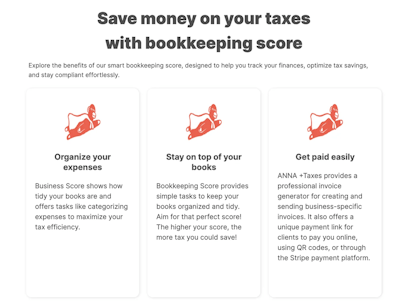
9 Key Reasons Why Small Businesses Fail in Australia


Explore the main reasons small businesses fail in Australia, including cash flow problems, lack of planning, and poor market strategy.

Do you want to start a business but are afraid of making mistakes that could lead you to bankruptcy?
Whatever the reason, in this article, you will see the most common reasons why small businesses in Australia fail and how to solve each problem.
Let’s start!
Key Business Failure Statistics in Australia
These statistics demonstrate the hard environment for small businesses in Australia in 2024 and 2025.
Economic pressures, sector-specific problems, and regional variations all contribute to the reported high rate of business failure:
1. Business Entry and Exit Rates (2023–24)
- Entries: 436,018 new businesses started operations.
- Exits: 362,893 businesses ceased operations.
- Exit Rate: 14.0% of businesses exited the market during this period.
2. Record-High Business Churn in 2024
- New Registrations: 505,474 businesses were registered.
- Deregistrations: 443,395 businesses were deregistered or wound down.
- Closure Rate: Approximately 17% of businesses operating at the start of 2024 closed by year-end.
3. Business Failure Rates by City
- Adelaide: The forecasted failure rate is 5.01%.
- Perth: 5.21%.
- Brisbane: 5.80%.
- Melbourne: 5.93%.
- Sydney: 6.07%
9 Key Reasons Why Small Businesses Fail in Australia
Small businesses in Australia fail at a high rate for a variety of reasons, including inadequate financial management and market research.
Based on recent research and expert analysis, below are the 9 most common causes of small business failure in Australia:
1. Financial Mismanagement
Financial mismanagement is one of the leading causes of small business failure in Australia, accounting for approximately 32% of all business closures.
That's no small sum.
When broken down, this frequently refers to inadequate cash flow management, failure to create or follow the budget, accumulating too much credit, or just failing to prepare adequately for tax season.
Many small business owners are enthusiastic about their work, but not everyone has a background in finance, which is where issues begin to pile.
It's tempting to focus on increasing sales and forget that even the most promising businesses can quickly fail if money isn't managed properly.
How To Solve This Problem?
✅ Get Acquainted With Your Numbers - Even if you're not a numbers person, you should grasp the fundamentals, such as tracking your income and expenses, calculating your profit margins, and understanding your cash flow.
✅ Create a Realistic Budget - Plan a budget that accounts for both expected and unforeseen expenses. A precise monthly or quarterly budget allows you to stay in control and avoid unpleasant surprises.
✅ Separate Accounts - Keep your business and personal finances separate, as this makes it easy to track spending, manage taxes, and remain compliant.
✅ Hire a Bookkeeper or an Accountant - Even a few hours of expert assistance every month can help you identify problems earlier and make better financial decisions.
✅ Understand Your Tax Requirements - Keep abreast of BAS, PAYG, and superannuation rules. Consider setting aside a percentage of your salary each month to offset future tax expenses.
✅ Regularly Monitor Your Financial Flow - Don't simply look at profits. Instead, make sure there's always enough cash flowing in to pay your daily expenses.
💡ProTip
When you use ANNA Money, there is no need for a bookkeeper or accountant!
With this tool, you can easily track your expenses, categorise them and always be ready for tax time. All you need to do is snap a picture of the receipt!
On top of that, you will get your bookkeeping score and will always be familiar with how you are performing.

2. Lack of Business Experience
Inexperienced business owners may struggle to develop a business plan, analyse rivals, price items, manage employees, or even choose when to make a change.
This is especially risky if the business is undercapitalised, with limited room for trial and error.
A few poor decisions, or none at all, can put a business on unstable ground from the start.
How to Solve This Problem?
✅ Begin With a Business Plan - It does not have to be perfect, but it should clearly state your objectives, target market, pricing strategy, and financial projections.
✅ Seek Mentorship - Do not attempt to figure things out on your own. Contact experienced business owners, join small business networks, or look into services like Australian Small Business Advisory Services (ASBAS).
✅ Continue to Educate Yourself - There are numerous resources available to help you expand your business expertise, including free government webinars and short online business courses (such as those offered by TAFE or Coursera).
✅ Use Expert Assistance as Needed - If you're unsure, hire a consultant, accountant, or marketing professional. It is preferable to invest in competent guidance rather than make costly blunders later.
3. Bad Record-Keeping
It may not be the most interesting aspect of running a business, but efficient record-keeping is necessary.
Without it, you're going blind, unsure of your financial situation, unaware of past-due invoices, and maybe making decisions based on speculation rather than facts.
According to industry data, around 12% of unsuccessful small businesses did not maintain adequate or accurate records.
That implies they were unable to properly track their income and expenses, missed critical tax or compliance deadlines, or failed to demonstrate their financial health to lenders or investors.
How to Solve This Problem?
✅ Be Consistent - Set up a regular time (weekly or monthly) to examine and update your documents. Do not let receipts, invoices, or bills pile up.
✅ Digitise Everything - Scan or photograph actual documents and save them in a secure cloud system.
✅ Understand What To Keep - Maintain records of all transactions, tax paperwork, employee information, and contract or legal agreements. In Australia, most records should be preserved for a minimum of five years.
💡ProTip
With ANNA Money, you have an easy solution!
The “Business Documents” feature lets you easily keep receipts, invoices, and business paperwork all in one location.
We will match transactions, extract crucial facts, and make everything simple to discover and share!
4. Insufficient Market Research
A surprising amount of small businesses in Australia fail because they do not conduct sufficient market research.
They presume there is demand, price their goods based on hypotheses, and undervalue the competition.
What is the result? They struggle to attract clients or end up selling something people don't want or can acquire elsewhere.
Good market research may help you understand who your ideal consumer is, what they actually need, and how to position yourself in a marketplace.
How to Solve This Problem?
✅ Talk With Potential Customers - Survey or interview people who fit your target demographic to find out what they want, how much they're willing to pay, and how frustrated they are with current possibilities.
✅ Examine Your Competitors - How are others in your industry performing? Evaluate their pricing, messaging, reviews, and market positioning. This can help you identify a gap or define your unique selling point.
✅ Test Before Launch - Instead of investing much at the outset, attempt a pilot version of your product or service to see how consumers react. Their behaviour is the best research of all.
✅ Continue Investigating After Launch - Maintain communication with your audience, solicit input, and be prepared to adjust if preferences or trends evolve.
5. Insufficient Working Capital or Funding
Many small businesses in Australia begin underfunded and struggle to stay afloat when unforeseen costs arise, such as equipment maintenance, sluggish sales times, or unanticipated tax obligations.
Working capital is what allows your business to function on a daily basis.
Without enough of it, you may be unable to pay suppliers, employees, or rent on time.
That pressure accumulates quickly, and if finance runs out, even promising businesses might come to a standstill.
How to Solve This Problem?
✅ Secure Funds Early - Before you launch, gather your financial resources, whether from personal savings, business loans, government subsidies, or investors. If you're just getting started, consider options such as the Australian Government's New Business Assistance or microfinance loans.
✅ Establish an Emergency Fund - Maintain a buffer, at least 3 to 6 months' worth of fixed expenses, to protect against unforeseen costs or seasonal fluctuations.
✅ Carefully Monitor Your Financial Flow - Keep track of your monthly income and expenses. This allows you to see warning indicators earlier and make better financial choices.
✅ Invoice Immediately and Follow Up - Don't allow late payments on your end. Establish clear payment conditions and use automatic reminders or invoice software to keep your cash flowing.
💡ProTip
With our business account, you can very easily create professional invoices and control what happens with them!
If they are not paid on time, we will automatically send a polite email and remind the debtors of the deadline.

6. Poor Location
If your business relies on walk-ins, visibility, or quick access, setting up in the wrong location might significantly reduce your chances of success.
Low-traffic or hard-to-find sites often result in fewer customers, less spontaneous foot traffic, and, consequently, lower revenues.
This is especially true for cafés, retail stores, hairdressers, and other service-oriented businesses that rely on visibility and convenience.
Even a great small business idea can fail if it is hidden away and no one can locate it.
How to Solve This Problem?
✅ Conduct a Location Audit Before Signing a Lease - Visit the area at various times throughout the day and week. Consider foot traffic, parking options, neighbouring competitors, and the types of individuals who visit the neighbourhood. Is your target audience passing by?
✅ Understand the Local Demographics - Use tools such as the Australian Bureau of Statistics (ABS) to determine who lives and works in the area. Ensure that your product or service meets the demands and lifestyles of surrounding residents or workers.
✅ Consider Accessibility and Visibility - A highly visible location with clear signage and easy access (including public transportation and parking) is always more likely to attract visitors.
7. Hiring the Wrong People and Staffing Problems
Poor recruiting decisions, a lack of leadership, or ineffective staff management can swiftly result in chaos and missed opportunities.
Small businesses frequently lack the luxury of a huge HR staff, so hiring is rushed or dependent on gut instinct rather than a sound process.
The wrong person in a critical position can slow down operations, disrupt team dynamics, and even drive consumers away.
Furthermore, a lack of supervision or imprecise goals can lead to underperformance among even the best personnel.
How to Solve This Problem?
✅ Hire For Fit, Not Just Experience - Look for people who share your business's beliefs and culture. A candidate with slightly less experience but the proper attitude and adaptability is typically a better long-term fit.
✅ Create Precise Role Descriptions - Before hiring, understand what the role entails and what success looks like. This helps to recruit qualified personnel and makes onboarding considerably easier.
✅ Don't Rush the Employment Process - Take the time to thoroughly interview, check references, and, if possible, offer a short paid trial period. It is more expensive to remedy bad hiring than to take a little longer to locate the perfect one.
✅ Provide Appropriate Training and Support - Even experienced employees require time to learn how you do things. Invest in onboarding and regular check-ins to ensure their success.
✅ Be A Leader, Not A Boss - Give your staff direction, establish clear expectations, and provide constructive feedback. Leadership is what transforms a group of individuals into a team.
✅ Outsource As Needed - If you aren't ready for full-time hires, freelancers or agencies can help you address talent gaps without requiring a long-term commitment. Through global hiring platforms like Remote, you may also consider hiring remotely in lower-cost locations.
8. Ignoring Customer Needs and Feedback
One of the fastest ways to lose customers is to stop listening to them.
Ignoring criticism, concerns, or changing expectations can cause a divide between your business and your audience.
Over time, the gap widens, and clients discreetly migrate to a competitor who does listen.
Customers are your best source of information.
If you ignore them, you risk falling behind or offering something no longer relevant.
How to Solve This Problem?
✅ Make It Easy To Give Feedback - Add a review section on your website, include a feedback link in emails, or have a suggestion box in-store. People are more likely to share if the process is simple.
✅ Listen Without Getting Defensive - Not all feedback will be positive, and that’s okay. Take it as a chance to improve, not a personal attack. Often, unhappy customers highlight things that other silent ones also feel.
✅ Spot Patterns and Trends - Don’t make changes based on one person’s opinion, but if you keep hearing the same thing, it’s worth acting on.
✅ Keep Your Customers In The Loop - If you’ve made changes based on their suggestions, let them know. It builds trust and shows you value their input.
✅ Regularly Review Customer Data - Look at buying patterns, website behaviour, or cart abandonment to see where people might be dropping off or losing interest to your website, including a feedback link in emails or having a suggestion box in-store. Simple processes encourage people to share more.
9. Overdependence on a Single Customer or Supplier
It may feel like a success when you land a big client or get a wonderful supplier deal, but placing all your eggs in one basket is dangerous.
Many small businesses in Australia are caught off guard by relying too heavily on a single customer for the majority of their revenue, or on a single supplier for critical supplies or services.
What's the problem? If the customer departs, delays payment, or reduces their budget, you're in danger.
Similarly, if your supplier raises pricing, has shipment delays, or goes out of business, your operations may come to a problem.
How to Solve This Problem?
✅ Look for a Balanced Client Base - Don't let any single customer account for more than 20-30% of your sales. It's OK to have big clients, but don't let them become your exclusive source of income.
✅ Actively Seek New Customers - Even if business is good, continue marketing. Use content, email marketing, social media, or collaborations to generate new leads and reduce your dependency on a single client.
✅ Create a Backup Supply Network - Always have a backup plan (or even a third plan) for critical supplies. Get quotations from different vendors and understand their delivery schedules and prices so you don't have to scramble if something goes wrong.
✅ Negotiate Flexible Terms - If you rely heavily on a supplier, request terms that will safeguard you, such as explicit return policies, fixed pricing, or shorter contract periods. Do not be frightened to negotiate.
✅ Monitor the Health of Clients and Suppliers - Keep a look out for late payments, unexpected staff changes, or other signals of instability. Preparing ahead of time is preferable to reacting too late.
Conclusion
There are many reasons why businesses fail, but there are also many reasons why they succeed.
If you follow the solutions offered in this article, your business can become one of them!
With all that, you can use ANNA Money and reach your goal even more easily - here's how!
How ANNA Money Can Help You Stay Afloat?
ANNA Money is an all-in-one business tool, so just as it can help you start your business, it can help you keep an eye on and always know exactly what is happening with it!
Here are key features:
⭐ Free Company Registration - We offer free company registration and hassle-free business account setup.
⭐ Business Account - Credit cards, virtual cards, Apple Pay, Google Pay, and employee expense cards. Easily check your balance and manage your payments.
⭐ Registered Office Service - Use same-day automatic mail screening and handling to keep your personal address off the public record (compliant with ASIC, ATO, and other government agencies).
⭐ Personalised Tax Calendar - Never miss another tax date and ensure timely compliance with all of your tax obligations.
⭐ Support from Tax Experts - Our pleasant support team will answer any questions you may have.
⭐ Payroll - File payroll for yourself and your staff.
⭐ Goods and Services Tax (GST) - GST is automatically calculated and logged with the ATO in only a few clicks.
⭐ Annual Accounts and Company Tax Return - File your annual accounts with ASIC and your company tax return with the ATO straight through ANNA.
Sign up today and avoid making these common mistakes that can lead you to failure!






